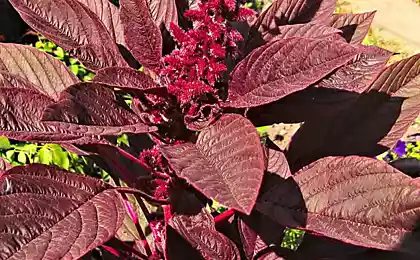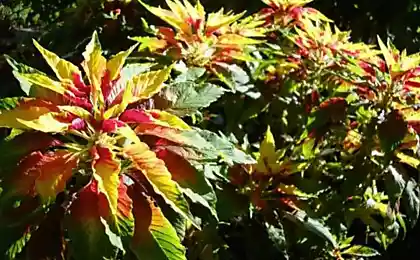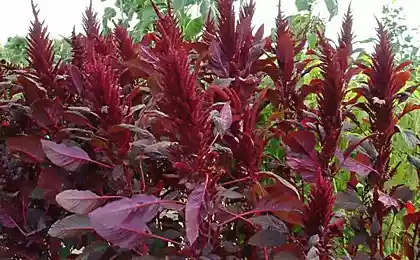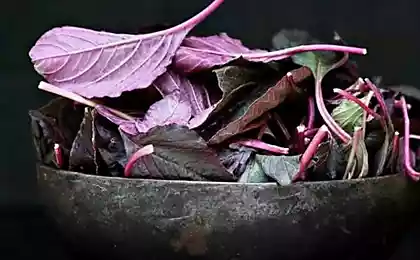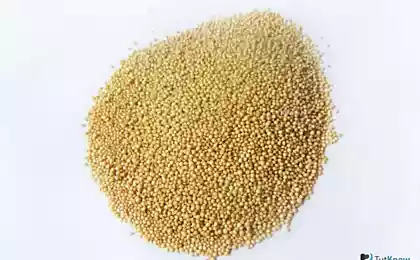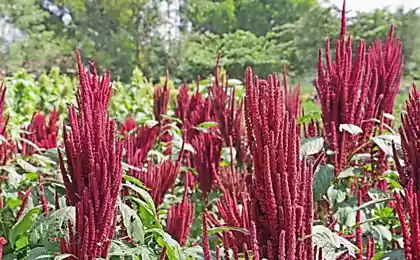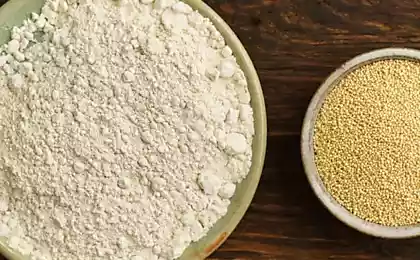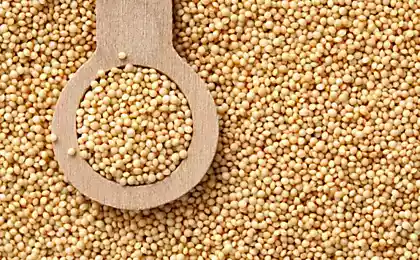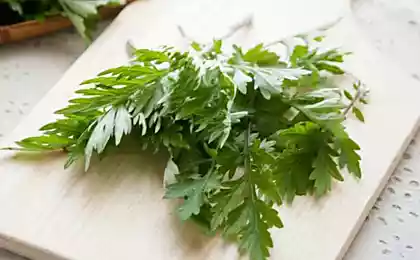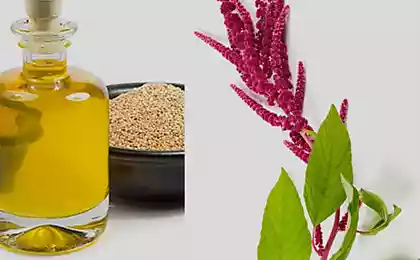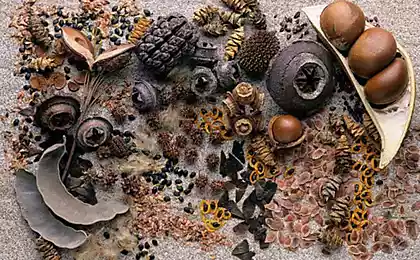447
Amaranth seeds enhance immunity
Did you know that "arrowroot" is a Greek word which means "immortal"? ... Wonderful seeds of amaranth. Many people don't even know that amaranth is eaten. And of course they don't know how to do it.However, this is food that deserves to be known: as its nutritional value is the same as the aroma.What is amaranth?
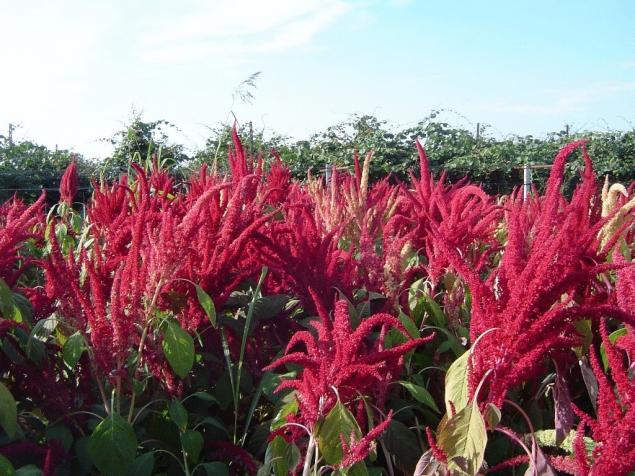
This plant of Mexican origin, which is one of the oldest plants cultivated by man. He was also awarded the title "miracle seed" by the Aztecs and Incas, which gave him supernatural powers. In some parts of the world, in particular, on the island of reunion and Madagascar, eat the leaves as salad. There are many varieties of this plant in the world. In Europe it is grown as an ornamental plant (Fox tail). It is often found on wasteland and is considered a weed. All varieties are edible and bring about 80 thousand small seeds per foot. The flowers have bold purple color. Why amaranth deserves to be consumed more?
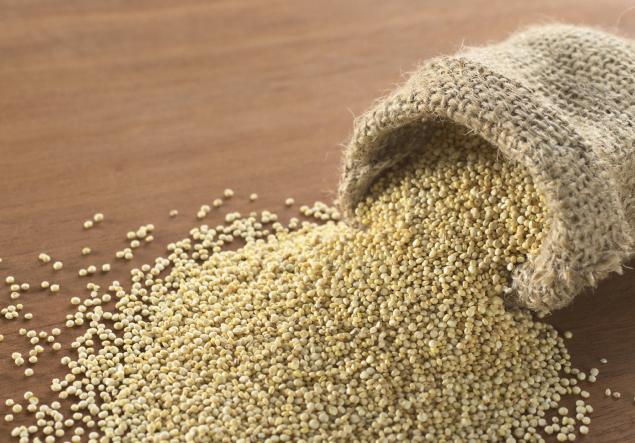
The seed of amaranth has exceptional nutritional value: contains lysine, an essential amino acid for humans and is absent in most grains, is richer in protein than cereals, and these proteins much better. Its mineral content: calcium, iron, magnesium, potassium, copper, zinc, manganese, selenium and phosphorus. Contains lecithin, supportive to the nervous system and brain. Its fat consists of 70% polinesiani, which makes it useful for memory, good immunity and help us fight inflammation. Amaranth grain consists of a large number of fiber, do not contain gluten. The leaves are also rich in protein, vitamin C, beta-carotene, iron and calcium. Nutritional value of amaranth is indispensable for pregnant women, convalescents, vegetarians, the elderly and children. The flowers and leaves of amaranth contain mucous substances that is useful for the intestines.How to use? Seeds: You will be surprised by their size: 1-2 mm, even smaller than quinoa. The seeds should be washed before cooking. Note that this is a very small seed and pass through the holes e of the smallest sieve. You can also use fabric, provided that the holes she's tiny. Then pour the seeds with cold water twice its volume and cook, covered, about twenty minutes. The cooked seeds have a sticky consistency. You can just add a few seeds in your soups, casseroles, pies or to cook porridge, mixed with other grains or legumes, adding them halfway. Texture makes amaranth interesting produced herbal ingredient for cakes, snacks, creams, puddings ...
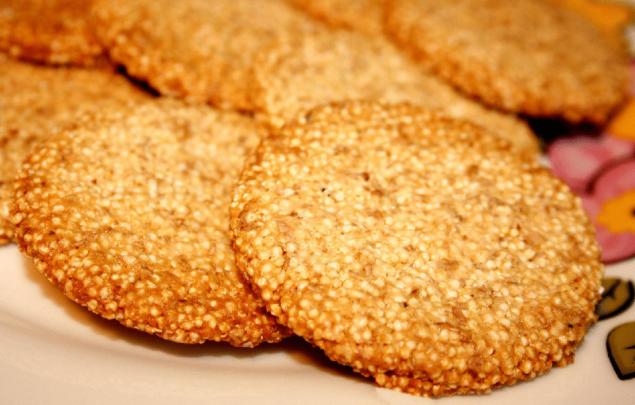
Amaranth flour. You'll find it in health food stores. It is interesting to replace up to 25% of flour in pastry recipes with amaranth flour. It will make them more moist, soft and sweet. The latter function allows you to reduce the amount of sugar in your cooking. Sprouts. As with all sprouts seeds - amaranth increases its nutritional properties. Just soak for 6 — 8 hours. Drain and rinse twice a day. After 2 -3 days you will see a tiny sprout that wraps around the seed. You need to eat them within three days. Don't be surprised if all of your seeds do not germinate: germination rate is about 60%.
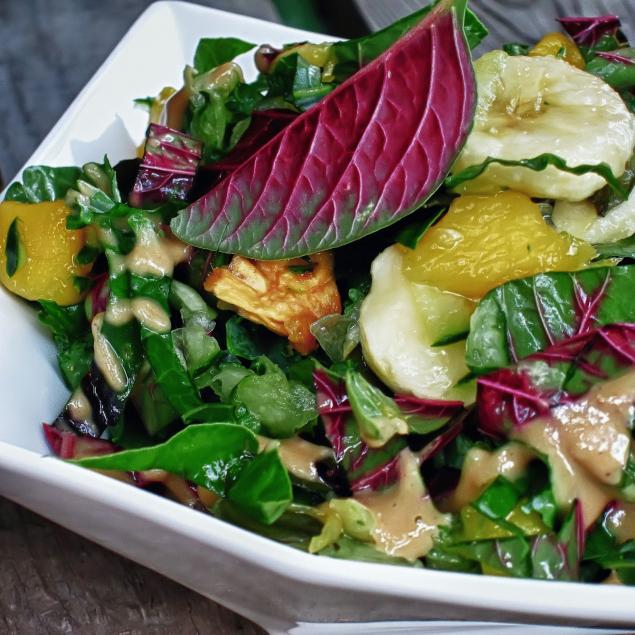
Eat these seeds in salads, compotes, yogurt: without heat treatment to preserve all the useful properties. Leaves. Young leaves appear in may and June can be eaten raw in salads. They can be cooked or steamed like spinach. Flowers. Eat their young (July-October), raw in salads to delight eyes and taste. When they are red – they contain anthocyanins, flavonoids are potent antioxidants (they are the same pigments contained in red wine, red grapes, eggplant, and all the red berries). The soothing lotion from bee stings, eczema and psoriasis ...
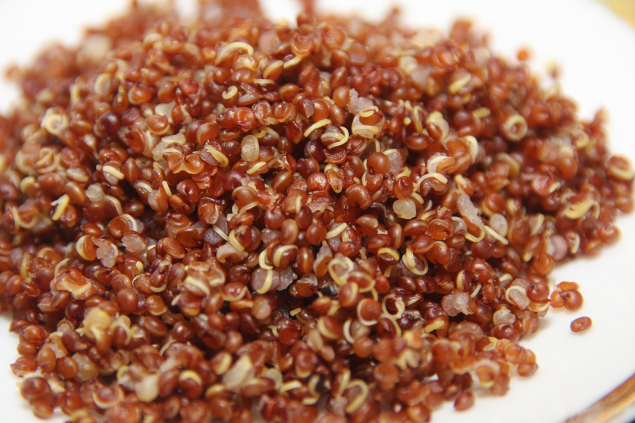
Amaranth contains mucilage, which softens and soothes irritation and itching. You can benefit from these advantages by making a poultice of fresh leaves or lotion: Pour 3 cups of boiling water over 2 teaspoons of amaranth seeds and leave for 10-20 minutes. A decoction of amaranth: 1 tablespoon amaranth seeds, pour a glass of cold water. Simmer, covered, 15 minutes. Drink 3 cups a day. This decoction is diuretic, refreshing, regulates the cycle in women. Traditionally used in cases of amoebic dysentery, for cleansing procedures to alleviate painful or irregular periods, increase lactation during breast feeding.
published
Source: /users/1077

This plant of Mexican origin, which is one of the oldest plants cultivated by man. He was also awarded the title "miracle seed" by the Aztecs and Incas, which gave him supernatural powers. In some parts of the world, in particular, on the island of reunion and Madagascar, eat the leaves as salad. There are many varieties of this plant in the world. In Europe it is grown as an ornamental plant (Fox tail). It is often found on wasteland and is considered a weed. All varieties are edible and bring about 80 thousand small seeds per foot. The flowers have bold purple color. Why amaranth deserves to be consumed more?

The seed of amaranth has exceptional nutritional value: contains lysine, an essential amino acid for humans and is absent in most grains, is richer in protein than cereals, and these proteins much better. Its mineral content: calcium, iron, magnesium, potassium, copper, zinc, manganese, selenium and phosphorus. Contains lecithin, supportive to the nervous system and brain. Its fat consists of 70% polinesiani, which makes it useful for memory, good immunity and help us fight inflammation. Amaranth grain consists of a large number of fiber, do not contain gluten. The leaves are also rich in protein, vitamin C, beta-carotene, iron and calcium. Nutritional value of amaranth is indispensable for pregnant women, convalescents, vegetarians, the elderly and children. The flowers and leaves of amaranth contain mucous substances that is useful for the intestines.How to use? Seeds: You will be surprised by their size: 1-2 mm, even smaller than quinoa. The seeds should be washed before cooking. Note that this is a very small seed and pass through the holes e of the smallest sieve. You can also use fabric, provided that the holes she's tiny. Then pour the seeds with cold water twice its volume and cook, covered, about twenty minutes. The cooked seeds have a sticky consistency. You can just add a few seeds in your soups, casseroles, pies or to cook porridge, mixed with other grains or legumes, adding them halfway. Texture makes amaranth interesting produced herbal ingredient for cakes, snacks, creams, puddings ...

Amaranth flour. You'll find it in health food stores. It is interesting to replace up to 25% of flour in pastry recipes with amaranth flour. It will make them more moist, soft and sweet. The latter function allows you to reduce the amount of sugar in your cooking. Sprouts. As with all sprouts seeds - amaranth increases its nutritional properties. Just soak for 6 — 8 hours. Drain and rinse twice a day. After 2 -3 days you will see a tiny sprout that wraps around the seed. You need to eat them within three days. Don't be surprised if all of your seeds do not germinate: germination rate is about 60%.

Eat these seeds in salads, compotes, yogurt: without heat treatment to preserve all the useful properties. Leaves. Young leaves appear in may and June can be eaten raw in salads. They can be cooked or steamed like spinach. Flowers. Eat their young (July-October), raw in salads to delight eyes and taste. When they are red – they contain anthocyanins, flavonoids are potent antioxidants (they are the same pigments contained in red wine, red grapes, eggplant, and all the red berries). The soothing lotion from bee stings, eczema and psoriasis ...

Amaranth contains mucilage, which softens and soothes irritation and itching. You can benefit from these advantages by making a poultice of fresh leaves or lotion: Pour 3 cups of boiling water over 2 teaspoons of amaranth seeds and leave for 10-20 minutes. A decoction of amaranth: 1 tablespoon amaranth seeds, pour a glass of cold water. Simmer, covered, 15 minutes. Drink 3 cups a day. This decoction is diuretic, refreshing, regulates the cycle in women. Traditionally used in cases of amoebic dysentery, for cleansing procedures to alleviate painful or irregular periods, increase lactation during breast feeding.
published
Source: /users/1077
